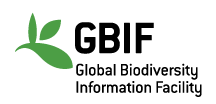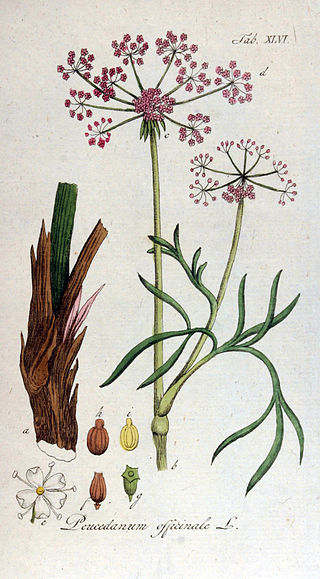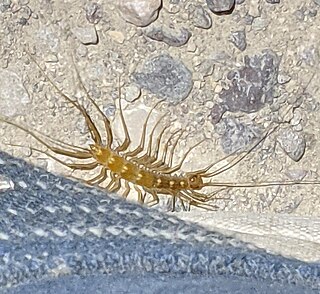
Reginald Innes Pocock F.R.S. was a British zoologist.

The Global Biodiversity Information Facility (GBIF) is an international organisation that focuses on making scientific data on biodiversity available via the Internet using web services. The data are provided by many institutions from around the world; GBIF's information architecture makes these data accessible and searchable through a single portal. Data available through the GBIF portal are primarily distribution data on plants, animals, fungi, and microbes for the world, and scientific names data.
The Catalogue of Life is an online database that provides an index of known species of animals, plants, fungi, and microorganisms. It was created in 2001 as a partnership between the global Species 2000 and the American Integrated Taxonomic Information System. The Catalogue is used by research scientists, citizen scientists, educators, and policy makers. The Catalogue is also used by the Biodiversity Heritage Library, the Barcode of Life Data System, Encyclopedia of Life, and the Global Biodiversity Information Facility. The Catalogue currently compiles data from 165 peer-reviewed taxonomic databases that are maintained by specialist institutions around the world. As of September 2022, the COL Checklist lists 2,067,951 of the world's 2.2m extant species known to taxonomists on the planet at present time.

Peucedanum is a genus of flowering plant in the carrot family, Apiaceae. Peucedanum boasts a global presence with diverse spread of morphological features. Peucedanum species are characterized by dorsally compressed mericarps, slightly prominent dorsal ribs, narrowly winged lateral ribs, and a broad commissure. However, the vast diversity of morphology, fruit forms, and phytochemical production makes classifying species in the Peucedanum challenging. Historically relevant in traditional medicine, Peucedanum's taxonomic complexity arises from its extensive diversity.
The World Register of Marine Species (WoRMS) is a taxonomic database that aims to provide an authoritative and comprehensive list of names of marine organisms.
Plazi is a Swiss-based international non-profit association supporting and promoting the development of persistent and openly accessible digital bio-taxonomic literature. Plazi is cofounder of the Biodiversity Literature Repository and is maintaining this digital taxonomic literature repository at Zenodo to provide access to FAIR data converted from taxonomic publications using the TreatmentBank service, enhances submitted taxonomic treatments by creating a version in the XML format Taxpub, and educates about the importance of maintaining open access to scientific discourse and data. It is a contributor to the evolving e-taxonomy in the field of Biodiversity Informatics.

Apamea genialis is a moth of the family Noctuidae. It is found in North America.
Abaetetuba is a genus of harvestmen in the family Sclerosomatidae.

Achromatium is a genus in the phylum Pseudomonadota (Bacteria).

Chaerilus is a genus of scorpions in the family Chaerilidae. They live in tropical parts of South Asia and Southeast Asia. A fossil genus Electrochaerilus is known from the Late Cretaceous (Cenomanian) aged Burmese amber.
Chaerilidae is a family of scorpions. It contains two genera, the extant Chaerilus and the extinct Electrochaerilus.
The Atlas of Living Australia (ALA) is an online repository of information about Australian plants, animals, and fungi. Development started in 2006. The Commonwealth Scientific and Industrial Research Organisation (CSIRO) is an organisation significantly involved in the development of the ALA. The Atlas of Living Australia is the Australian node of the Global Biodiversity Information Facility. The ALA is being used to help assess suitability of revegetation projects by determining species vulnerability to climatic and atmospheric change.
Perittopus is a genus of riffle bug, and the sole genus of subfamily Perittopinae. Its species occur from southern India east to Indonesia and north to China in mountain stream habitats. Visually, the red or orange to reddish colour of Perittopus spp. separates them from other members of the Veliidae.

Rhinotus purpureus is a species of millipede in the family Siphonotidae. It is found in the Caribbean, Central America, North America, and South America.

Rhinotus is a genus of millipedes in the family Siphonotidae. There are at least 20 described species in Rhinotus.
Troglotayosicidae is a family of scorpions. The only genus in the family is Troglotayosicus.
Siphonophora is a genus of millipedes belonging to the family Siphonophoridae.

Cryptops sometimes known as cave centipedes, is a centipede genus in the family Cryptopidae; species records have a world-wide distribution.

Scutigera linceci, the Arizona house centipede is a species of the Scutigeromorph centipede found in the Southern United States and Central America. Its species name refers to Dr Lincecum, a field naturalist. In the wild, they live under stones and in hollow logs, but the species frequently enters human habitation.

Dryocora is a genus of beetle in the family Prostomidae. It was discovered in 1686 by Francis Polkinghorne Pascoe and is found in Southern Australia, Tasmania and New Zealand.








